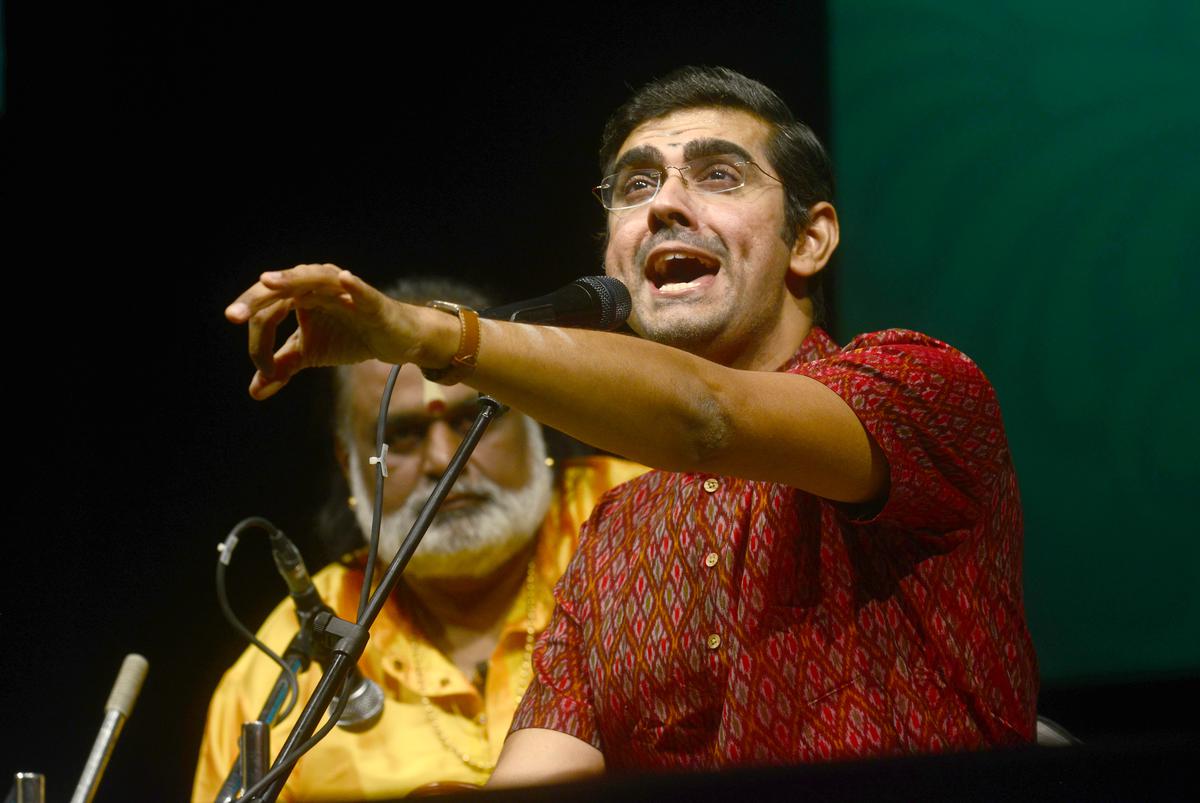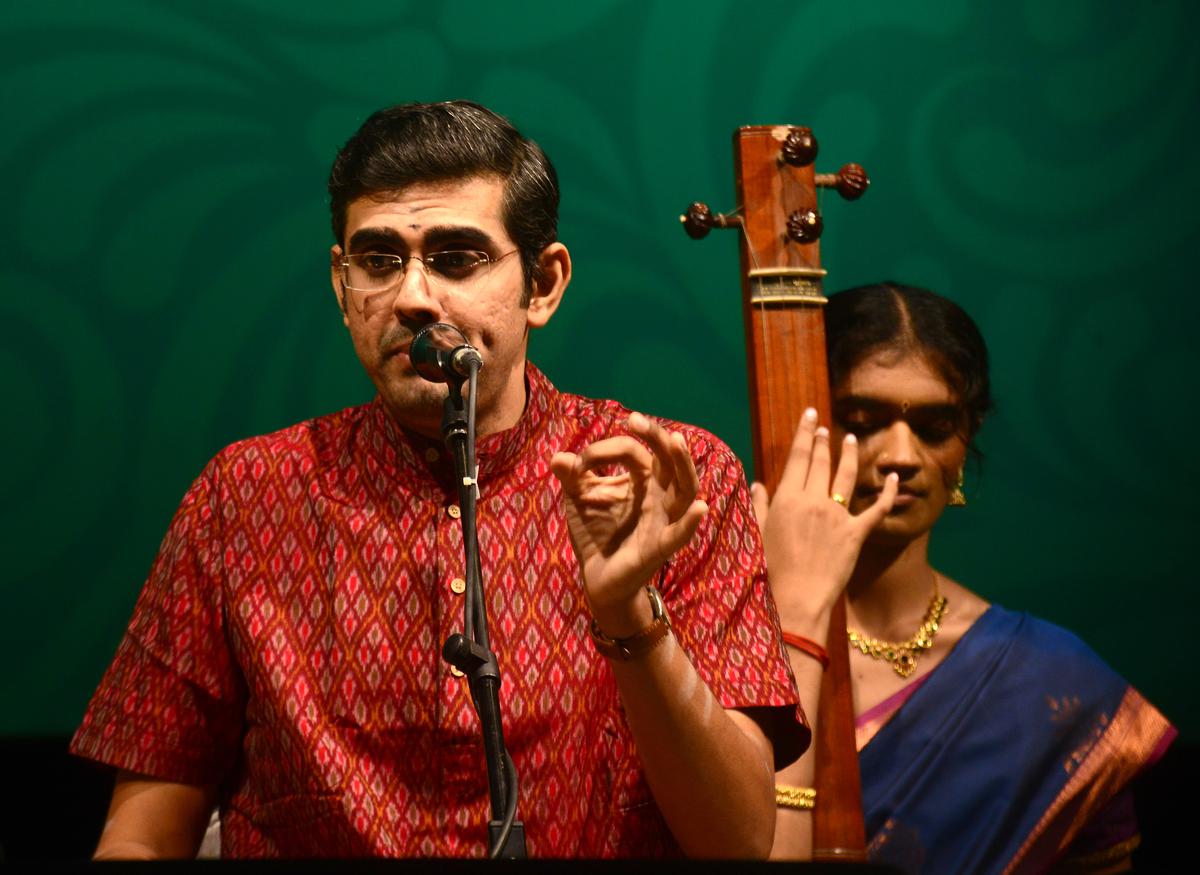Sikkil Gurucharan with Umayalpuram Sivaraman, Ghatam Karthick and V. Sanjeev performing at Music Academy’s December Music Festival, 2023.
| Photo Credit: M. SRINATH
Sikkil Gurucharan is a musician with a high involvement and demonstrates good self-awareness about how his music is received. His concert had limited crank-up for over an hour, before he re-engineered significantly towards the end of the concert, with a well-rendered main piece in Kalyani and the RTP.
The concept of power play existed in Carnatic concerts, with its own contextual relevance. It’s the early period that a performer quickly assess his or her form and various other situational parameters that can impact the concert outcome. Gurucharan’s power play was subdued. He started off with the Mayamalava Gowlai varnam ‘Sarasija nabha’ by Swati Tirunal and quickly moved into singing ‘Sanatana Paramapavana’ by Tyagaraja in Phalamanjari. Both these created a flat impact, perhaps due to the choices. Jaganmohini raga had some pleasant ascends and one thought the take-off was on the anvil. ‘Dayajuda manchi’ (Syama Sastry, Misra Chapu) did not sparkle as Gurucharan may have intended and the concert was still taxing.

Sikkil Gurucharan
| Photo Credit:
M. SRINATH
Gurucharan next played a maiden over with ‘Sri Varalakshmi’ (Sri, Dikshitar) that stalled the goal to impress. By then, the sudha madhyama had run its long writ and the absence of strike rotation was clearly felt. The fact that the initial ragas and the kritis stayed in the madhyastayi arc did not help to perk up things either.
The normally hyper-active veteran Umayalpuram Sivaraman also kept his best for the slog overs. The Kalyani alapana brightened up the proceedings. Gurucharan came into his full self, with an imaginative multi-layered rendition of the raga, buffering defining sangathis with poignant landings. Violinist V Sanjeev. who had till then somewhat propped up the concert, further extended his innings with his equally appealing manodharma.
Gurucharan managed his time quotient well and kept ample space for the later elaborations. The Kriti, ‘Karu velpu nilku’ of Tyagaraja in 2 kalai Adi is almost extinct since the days of Alathur Brothers, and Gurucharan deserves praise for keeping it platform-relevant. Gurucharan utilised the tail winds to sing a good niraval at ‘Dharalona rama’ staying at the top-end of the scale for enhancement. Swaras and kuraippu had the team rising to new heights as the percussion joined the alternating sequence with good laya knots.

Kalayani raga, the main piece, was well-rendered.
| Photo Credit:
M. SRINATH
Sriranjani raga alapana brought out more of Gurucharan’s aesthetic skills. V Sanjeev essayed a beautiful response. Thanam was predictable, but the pallavi in Khanda Jampai, Khanda nadai ‘Namakkini bhayamedu’ had all the grandeur of music towing the laya pulse and exciting swara segments, including in allied ragas such as Ranjani, Janaranjani etc. Umayalpuram Sivaraman showed that he is a master in this game. His tani with Karthick (ghatam) was a brief avalanche of several nadais and kalams, capsuled into about ten minutes.
‘Swara sundaranguni’ in Paras was among the tail pieces. Sikkil Gurucharan is a smart musician and will know the changes he needs in his gameplan.